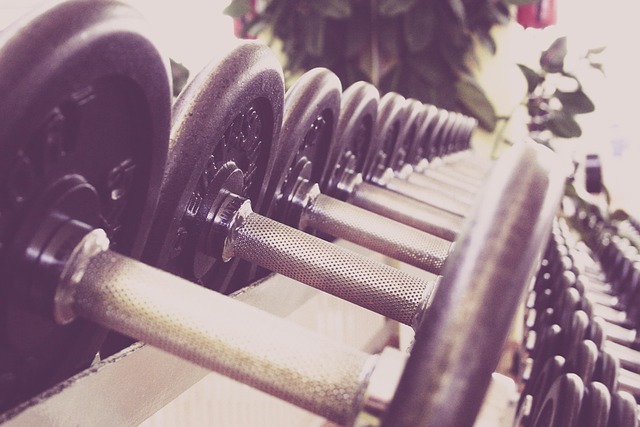PRP therapy, leveraging platelet-rich plasma from a patient's blood, is a promising regenerative approach for sports injuries among athletes. Compared to traditional treatments like RICE and corticosteroids, PRP reduces pain, expedites recovery, and enhances outcomes for tendon injuries, muscle strains, and ligament sprains. Although multiple treatments are needed at higher costs, PRP offers faster recovery times and reduced side effects when administered by a qualified professional. With proper understanding, it has the potential to revolutionize athletic recovery.
In the pursuit of optimal athletic performance, understanding effective injury treatment methods is paramount. This article delves into the comparative analysis of Platelet-Rich Plasma (PRP) therapy against traditional sports medicine practices. PRP therapy emerges as a promising regenerative therapy for athletes, harnessing the body’s natural healing mechanisms to accelerate tissue repair. We explore its mechanism, compare it with conventional treatments, and scrutinize patient outcomes, benefits, and considerations for athletes.
Understanding PRP Therapy: A Regenerative Approach
PRP therapy, or Platelet-Rich Plasma therapy, is a cutting-edge regenerative approach gaining popularity in sports medicine. It involves harnessing the body’s natural healing mechanism by extracting and concentrating platelets from a patient’s blood. These platelets are rich in growth factors that stimulate tissue repair and regeneration, making PRP a promising treatment for athletes recovering from various injuries. This therapy offers a more holistic and natural alternative to traditional treatments, aiming to enhance the body’s inherent ability to heal itself.
By injecting concentrated platelets directly into the affected area, PRP therapy accelerates the healing process, reducing inflammation and promoting tissue regeneration. Unlike conventional methods that often involve medication or surgery, PRP is a minimally invasive procedure with minimal downtime. Its regenerative properties make it an attractive option for athletes seeking faster recovery times while avoiding potential side effects of other treatments.
Traditional Sports Injury Treatments: Current Practices
Traditional sports injury treatments have long relied on a combination of rest, ice, compression, and elevation (RICE), along with physical therapy and over-the-counter pain medications. These methods aim to reduce inflammation, manage pain, and promote healing in sprains, strains, and other common athletic injuries. Many athletes also turn to corticosteroid injections for rapid relief, though these carry potential side effects and may not be suitable for all types of injuries. Surgery is considered a last resort, typically reserved for severe cases where conservative treatments have failed.
Recent advancements in sports medicine have introduced regenerative therapies as promising alternatives or adjuncts to traditional treatments. Regenerative therapy for athletes focuses on stimulating the body’s natural healing process by using autologous blood products, such as platelet-rich plasma (PRP), to accelerate tissue repair and reduce recovery times. This approach shows potential in treating a range of sports injuries, from tendinopathy and ligament sprains to muscle tears and articular cartilage damage.
Comparing Efficacy and Patient Outcomes
When comparing PRP (Platelet-Rich Plasma) therapy to traditional treatments for sports injuries, a key metric is patient outcomes and efficacy. Studies have shown that PRP therapy offers promising results for athletes suffering from tendon injuries, muscle strains, and ligament sprains. Patients often experience reduced pain, faster recovery times, and improved functional outcomes compared to those receiving conventional treatments alone.
While traditional methods like rest, physical therapy, and corticosteroid injections are effective in many cases, PRP therapy stands out as a potentially superior regenerative therapy for athletes. By harnessing the body’s natural healing mechanisms through concentrated platelets, PRP promotes tissue repair and regeneration, leading to better long-term patient outcomes for active individuals dealing with sports injuries.
Benefits and Considerations for Athletes
PRP therapy offers a promising approach for athletes looking for faster recovery times and reduced pain from sports injuries, making it an attractive alternative to traditional treatments. This regenerative therapy utilizes a patient’s own platelet-rich plasma, rich in growth factors, to stimulate the healing process of damaged tissues. The benefits are significant: it can accelerate tissue repair, promote new blood vessel formation, and reduce inflammation.
However, athletes should consider that PRP is not a universal solution for all sports injuries. It may require multiple treatments over several weeks, and costs can be higher than traditional methods. Moreover, while generally safe when administered by a qualified medical professional, there are potential risks including infection, pain at the injection site, and in rare cases, an adverse reaction to the procedure. Nonetheless, with proper understanding and expectations, PRP therapy has the potential to revolutionize athletic recovery.
In conclusion, while traditional treatments have long been the go-to for sports injuries, PRP therapy offers a promising alternative with its regenerative capabilities. By harnessing the body’s own healing power, PRP provides a more targeted and natural approach to recovery. With its growing popularity among athletes seeking faster and lasting results, further research into this innovative treatment is sure to enhance our understanding of optimal patient outcomes in the world of sports medicine. As we navigate the balance between established practices and emerging therapies like PRP, athletes can benefit from a more comprehensive range of options tailored to their specific needs, ultimately fostering quicker returns to the field and enhancing overall athletic performance.
